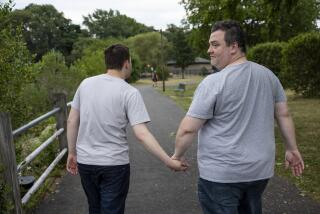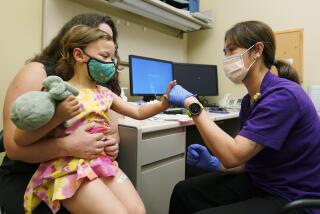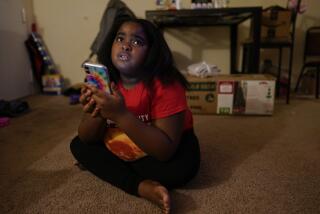Rehearsing for Their MRIs Makes Kids the Image of Poise
Lie perfectly still. Don’t move a muscle. Your body is sliding into a dark tunnel. Your head is trapped in a cage-like helmet. The tube is so narrow that if you twist, your body might touch the sides.
Now comes the noise, the brain-rattling clatter of a freight train heading straight into your tunnel. You can almost see the headlight.
Remember, do not move.
This is how it feels to have an MRI, the magnetic resonance imaging that allows doctors to take clear pictures of your insides without pain or exposure to dangerous radiation. It can be pretty scary.
Now, imagine you’re 5 years old.
Three years ago, half of the children who needed an MRI at Yale-New Haven Hospital in Connecticut were given a sedative or general anesthesia to make it through the test. Now, with the help of a mock scanner and a training program, nine of 10 lie still and tolerate an MRI without medication.
“With the mock scanner, they’re oriented, they know what to expect,” said Charlene Sastre, an MRI technologist at Yale-New Haven. The training consists of three practice sessions in which children get to lie in a realistic scanner, hear the noise and practice holding perfectly still without the pressure of the real thing. They get to meet the nurse who will accompany them to the real test while their parents learn to work with the nurse.
“The kids are usually pretty bored by the time they get downstairs [to the real MRI scanner],” said Bruna Banyas, one of the nurses who does the training. “They jump up on the table and they stay for 40 minutes. Sometimes they fall asleep because they’re so comfortable.”
That’s what Greg and Rachel Green were hoping for when they brought 5-year-old Brandon to Yale-New Haven for training recently. Brandon had had coordination problems and his neurologist thought a curve in his spine might be throwing his body off balance.
Banyas showed him a poster board lined with black, shadowy photographs of a brain. She reminded him that the pictures with bright splashes of color were ruined because the patient moved. Brandon agreed that he wanted his brain picture to be perfect.
The door of the mock scanner room is painted to look like the ticket office at an old railway station. The entrance to the scanner is surrounded by a painted brick backdrop, making the scanner tube look like a railroad tunnel.
Brandon hopped up on the table and adjusted headphones through which he would listen to a book on tape. It was Brandon’s third training session. His parents said the investment of time had been worthwhile. Brandon did not move when his body was slid into the scanner tunnel. Greg Green said Brandon had an operation when he was younger and became nauseated from the anesthesia. Everyone wanted to avoid that this time.
Researchers at Yale-New Haven initiated the training about three years ago at the request of a child psychologist who had heard about similar programs elsewhere and thought it might be helpful for his studies of children’s brains.
The program was extended to children with medical problems such as headaches, brain tumors and epilepsy. Because it is part of a study, there is no charge for the training and any child is eligible. So far, 100 children with medical problems have been prepared for MRIs.
Of the 100 children who have needed MRIs for medical reasons, more than 90 completed the test without sedation, said Barbara A. Teague, the nurse who designed the program. When Brandon had his real MRI, it lasted more than an hour and he did not move at all.
*
Hilary Waldman is a reporter for the Hartford Courant, a Tribune company.






